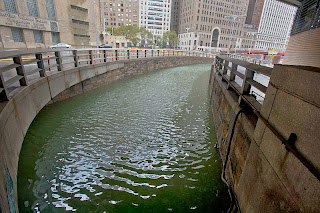Saturday, October 26, 2013
Sandy clean-up 'enormous' one year on
Terra Daily via AFP: A year after Hurricane Sandy, the United States still faces an enormous task to repair $60 billion worth of damage and improve resiliency before the next cyclone. One of the costliest hurricanes in US history, Sandy ripped into the East Coast, affecting 24 states and paralyzing parts of New York, New Jersey and Connecticut.
More than 200 people were killed. Lower Manhattan was plunged into darkness for a week. New York, one of the financial capitals of the world, ground to a halt. Businesses lost millions. The subway was flooded. Flights were cancelled. At least 650,000 houses were affected and power cuts lasted for months in some areas.
Schools and hospitals were disrupted, and fuel supplies interrupted after refineries and gas stations were hit. Congress approved $60 billion in emergency relief, but bottlenecks, delays and insurance issues have made it difficult for many victims to rebuild shattered lives.
Steven Cohen, executive director of The Earth Institute at Columbia University, said parts of the response had been very good and other parts "pathetic." "The best part was the emergency response and getting people out of harm's way and getting the New York City subway system up and running as fast as possible.
"The worst part has been the bureaucracy and the politics surrounding reconstruction. The fact it took months to get the aid package passed through Congress." He called for a new incremental tax, such as on carbon or an increased tax on gasoline, to fund a permanent fund to respond more quickly to natural emergencies....
Brooklyn Battery Tunnel flooded by Hurricane Sandy, shot by Metropolitan Transportation Authority of the State of New York, Wikimedia Commons via Flickr, under the Creative Commons Attribution 2.0 Generic license
More than 200 people were killed. Lower Manhattan was plunged into darkness for a week. New York, one of the financial capitals of the world, ground to a halt. Businesses lost millions. The subway was flooded. Flights were cancelled. At least 650,000 houses were affected and power cuts lasted for months in some areas.
Schools and hospitals were disrupted, and fuel supplies interrupted after refineries and gas stations were hit. Congress approved $60 billion in emergency relief, but bottlenecks, delays and insurance issues have made it difficult for many victims to rebuild shattered lives.
Steven Cohen, executive director of The Earth Institute at Columbia University, said parts of the response had been very good and other parts "pathetic." "The best part was the emergency response and getting people out of harm's way and getting the New York City subway system up and running as fast as possible.
"The worst part has been the bureaucracy and the politics surrounding reconstruction. The fact it took months to get the aid package passed through Congress." He called for a new incremental tax, such as on carbon or an increased tax on gasoline, to fund a permanent fund to respond more quickly to natural emergencies....
Brooklyn Battery Tunnel flooded by Hurricane Sandy, shot by Metropolitan Transportation Authority of the State of New York, Wikimedia Commons via Flickr, under the Creative Commons Attribution 2.0 Generic license
Labels:
disaster,
hurricanes,
US
Subscribe to:
Post Comments (Atom)




No comments:
Post a Comment